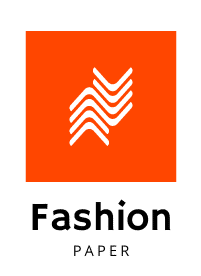
How to develop a secure and scalable AI-driven platform for remote patient monitoring?
In today's rapidly evolving healthcare landscape, remote patient monitoring (RPM) has emerged as a crucial component in enhancing patient care and improving health outcomes. The need for secure and scalable RPM systems is paramount, as they allow healthcare providers to monitor patients in real time, regardless of their location. This article delves into the essential steps and considerations for developing a state-of-the-art, AI-driven platform for remote patient monitoring, with a focus on security, scalability, and patient data integrity.
Understanding the Critical Role of Data Security in RPM Systems
When developing an AI-driven RPM system, one of the primary concerns is ensuring the security of patient data. Given the sensitive nature of health data, it's imperative to deploy robust security measures to protect patients from potential breaches.
A lire en complément : What are the critical steps for developing a secure AI-powered recommendation system for e-commerce?
Data Encryption and Secure Transmission
Data encryption is a foundational element in safeguarding patient data. By encrypting data both at rest and in transit, healthcare organizations can minimize the risk of unauthorized access. Moreover, utilizing secure transmission protocols such as TLS (Transport Layer Security) ensures that patient data remains protected during transmission between devices and servers.
Implementing Multi-Factor Authentication (MFA)
Another essential measure is the implementation of Multi-Factor Authentication (MFA). This adds an extra layer of security by requiring users to provide multiple forms of verification before accessing the system. MFA can significantly reduce the likelihood of unauthorized access, thereby protecting sensitive health data.
A voir aussi : What are the advanced techniques for securing AI-driven natural language processing models?
Ensuring Compliance with Regulatory Standards
Compliance with regulatory standards, such as HIPAA (Health Insurance Portability and Accountability Act) in the United States and GDPR (General Data Protection Regulation) in Europe, is crucial. These regulations mandate stringent security protocols to protect patient data. Adhering to these standards not only ensures legal compliance but also builds trust with patients and healthcare providers.
Leveraging Artificial Intelligence and Machine Learning in RPM
Artificial intelligence (AI) and machine learning (ML) are revolutionizing patient monitoring by enabling sophisticated data analysis and predictive capabilities. Incorporating AI-driven technologies into an RPM system can enhance healthcare delivery and improve patient outcomes.
Predictive Analytics and Early Intervention
AI and ML algorithms can analyze vast amounts of health data to identify patterns and predict potential health issues before they become critical. This capability allows healthcare professionals to intervene early, providing timely and effective care that can prevent complications and improve patient outcomes.
Personalized Patient Care
AI-driven RPM systems can tailor care to individual patients by analyzing their unique health data. This personalized approach ensures that patients receive the most appropriate care based on their specific needs, leading to better overall health outcomes.
Continuous Monitoring and Real-Time Alerts
Continuous monitoring enabled by AI can provide healthcare providers with real-time alerts about significant changes in a patient's condition. This allows for prompt action and continuous patient care, even when patients are not physically present in a healthcare facility.
Building a Scalable Architecture for RPM Solutions
Scalability is a key consideration when developing an RPM system. As the demand for remote patient monitoring continues to grow, the system must accommodate an increasing number of patients, devices, and data points.
Cloud-Based Infrastructure
A cloud-based infrastructure offers significant advantages in terms of scalability. By leveraging cloud services, healthcare organizations can easily scale their RPM systems to meet increasing demand. Additionally, cloud-based solutions provide flexibility and cost-efficiency, allowing for seamless integration of new features and updates.
Microservices Architecture
Implementing a microservices architecture can further enhance the scalability of an RPM system. This approach involves breaking down the system into smaller, independent services that can be developed, deployed, and scaled individually. This not only improves scalability but also enhances the system's resilience and maintainability.
Efficient Data Management
Effective data management is crucial for scalability. Utilizing advanced data storage solutions and efficient data processing techniques can help manage the vast amounts of health data generated by RPM systems. This ensures that the system remains responsive and efficient, regardless of the volume of data being processed.
Enhancing User Experience through App Development
A user-friendly app is central to the success of an RPM system. The app serves as the primary interface for patients and healthcare providers, facilitating patient monitoring, data exchange, and communication.
Intuitive User Interface (UI) and User Experience (UX) Design
Designing an intuitive UI and UX is essential for ensuring that patients and healthcare professionals can easily navigate the app. The design should prioritize simplicity and ease of use, while also providing access to critical features and information. This can enhance user satisfaction and engagement with the system.
Integration with Medical Devices
The app should seamlessly integrate with a wide range of medical devices used for patient monitoring. This includes devices that measure vital signs such as heart rate, blood pressure, and glucose levels. Ensuring compatibility with various devices enables comprehensive patient care and facilitates accurate data collection.
Real-Time Communication and Data Sharing
Effective communication and data sharing between patients and healthcare providers are vital components of an RPM system. The app should support real-time messaging, video consultations, and secure data exchange to enable prompt and efficient care delivery.
Ensuring Continuous Development and Improvement of RPM Software
Continuous improvement is critical for maintaining the effectiveness and relevance of an RPM system. Regular updates and enhancements ensure that the system remains aligned with technological advancements and the evolving needs of patients and healthcare providers.
Agile Software Development Practices
Adopting agile software development practices can facilitate continuous improvement. This approach involves iterative development, regular feedback, and continuous testing, allowing for rapid identification and resolution of issues. Agile practices ensure that the RPM software remains flexible, responsive, and up-to-date.
Incorporating Feedback from Users
Gathering and incorporating feedback from patients and healthcare professionals is crucial for the continuous improvement of the system. User feedback can provide valuable insights into potential areas for enhancement, helping to refine features and improve overall user experience.
Leveraging Advanced Technologies
Staying abreast of technological advancements and integrating them into the RPM system can further enhance its capabilities. This includes leveraging emerging technologies such as blockchain for enhanced security, IoT (Internet of Things) for improved device connectivity, and 5G for faster and more reliable data transmission.
Developing a secure and scalable AI-driven platform for remote patient monitoring requires a multifaceted approach that encompasses data security, AI integration, scalability, user-friendly app development, and continuous improvement. By prioritizing these key aspects, healthcare organizations can create robust RPM systems that enhance patient care, improve health outcomes, and revolutionize healthcare delivery. The future of remote patient monitoring lies in innovative and secure solutions that adapt to the dynamic needs of patients and healthcare providers alike.
